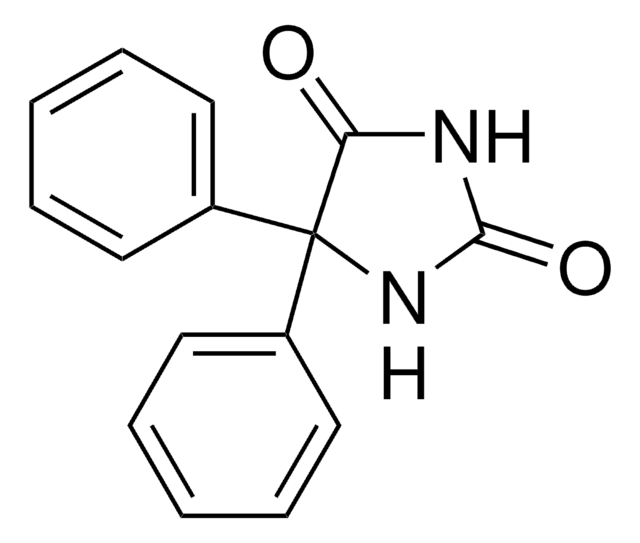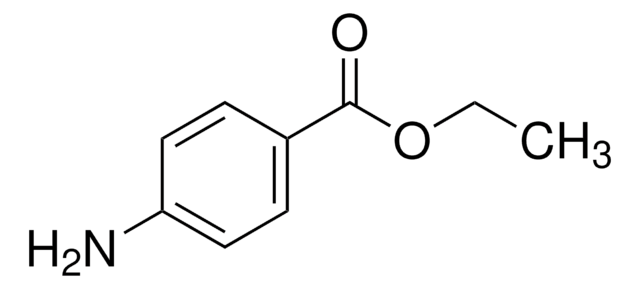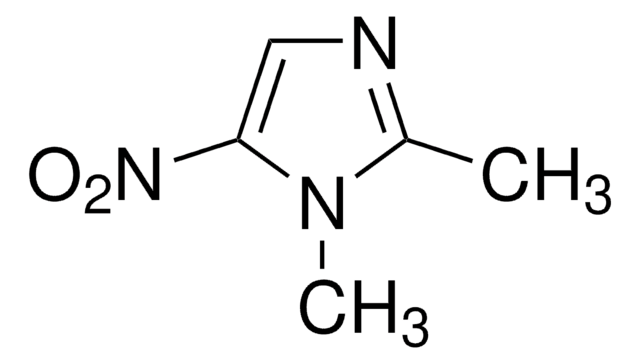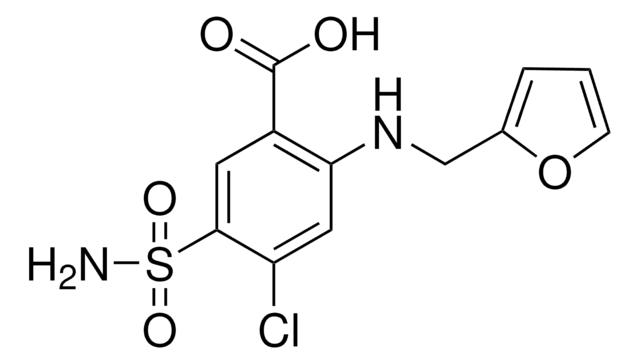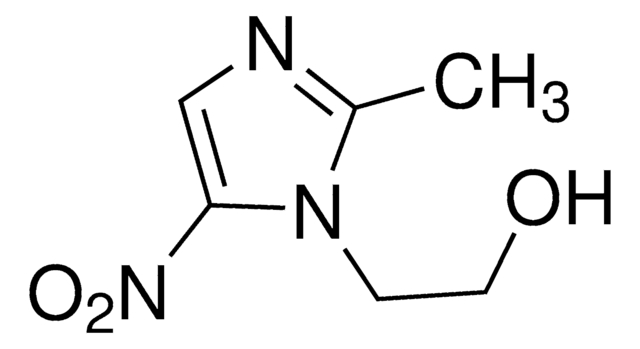D4505
5,5-Diphenylhydantoin sodium salt
≥99%
Sinónimos:
5,5-Diphenyl-2,4-imidazolidinedione, Phenytoin
About This Item
Productos recomendados
assay
≥99%
form
powder
solubility
aqueous base: soluble
SMILES string
[Na]N1C(=O)NC(C1=O)(c2ccccc2)c3ccccc3
InChI
1S/C15H12N2O2.Na/c18-13-15(17-14(19)16-13,11-7-3-1-4-8-11)12-9-5-2-6-10-12;/h1-10H,(H2,16,17,18,19);/q;+1/p-1
InChI key
FJPYVLNWWICYDW-UHFFFAOYSA-M
Gene Information
human ... CNR1(1268) , CNR2(1269) , CYP2C9(1559) , SCN10A(6336) , SCN11A(11280) , SCN1A(6323) , SCN2A(6326) , SCN3A(6328) , SCN4A(6329) , SCN5A(6331) , SCN7A(6332) , SCN8A(6334) , SCN9A(6335)
rat ... Faah(29347) , Scn1a(81574) , Scnn1g(24768) , Slc6a1(79212)
¿Está buscando productos similares? Visita Guía de comparación de productos
General description
Application
- in the cream preparation for treating burn wounds
- in seizure behavior testing as an anticonvulsant in Drosophila
- in in vivo embryo toxicity test in mouse embryonic stem cells
Biochem/physiol Actions
Features and Benefits
signalword
Warning
hcodes
Hazard Classifications
Acute Tox. 4 Oral - Repr. 2 - Skin Sens. 1
Storage Class
11 - Combustible Solids
wgk_germany
WGK 3
flash_point_f
Not applicable
flash_point_c
Not applicable
ppe
Eyeshields, Faceshields, Gloves, type P3 (EN 143) respirator cartridges
Certificados de análisis (COA)
Busque Certificados de análisis (COA) introduciendo el número de lote del producto. Los números de lote se encuentran en la etiqueta del producto después de las palabras «Lot» o «Batch»
¿Ya tiene este producto?
Encuentre la documentación para los productos que ha comprado recientemente en la Biblioteca de documentos.
Contenido relacionado
Discover Bioactive Small Molecules for ADME/Tox
Nuestro equipo de científicos tiene experiencia en todas las áreas de investigación: Ciencias de la vida, Ciencia de los materiales, Síntesis química, Cromatografía, Analítica y muchas otras.
Póngase en contacto con el Servicio técnico